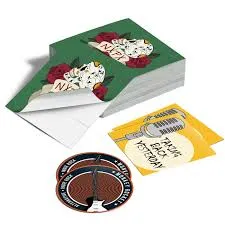The Evolution of Shipping Box Design Functionality Meets Aesthetics
In the world of logistics and e-commerce, the importance of shipping box design cannot be overstated. As online shopping continues to surge, the role of the humble shipping box has transformed from mere carrier of goods to a critical element of branding and customer experience. This article delves into the various aspects of shipping box design, highlighting its evolution and the factors that contribute to effective and innovative packaging solutions.
The Purpose of Shipping Boxes
At its core, the primary function of a shipping box is to protect products during transit. They shield items from damage caused by external factors such as impact, moisture, and temperature fluctuations. Therefore, the choice of materials and the structural design are paramount. Boxes that are too flimsy risk damaging the items inside, while overly robust materials can lead to increased shipping costs. The ideal shipping box strikes a balance between durability and cost-effectiveness.
Material Selection and Sustainability
Traditionally, cardboard has dominated the shipping box market due to its lightweight nature and recyclability. However, as awareness of environmental issues grows, there has been a notable shift towards sustainable packaging solutions. Companies are now exploring alternatives such as biodegradable materials, recycled content, and even innovative designs like mushroom-based packaging. This sustainable approach not only addresses ecological concerns but also resonates with modern consumers who prefer brands aligned with their values.
Customization and Branding
shipping boxes design

In recent years, shipping boxes have evolved into a canvas for branding. Custom designs, colors, and logos allow companies to make a lasting impression on their customers. Creative packaging can enhance unboxing experiences, turning a simple delivery into an exciting event. Brands like Apple and Amazon use minimalistic yet striking designs that reflect their identity and values. Furthermore, customized boxes can improve brand recognition and customer loyalty, as consumers often associate memorable packaging with positive experiences.
Innovative Design Techniques
Another crucial aspect of shipping box design is the incorporation of innovative features that enhance functionality. For example, some boxes now come with built-in handles, tear strips, and easy-open designs that simplify the unboxing process. Others utilize smart technology, such as QR codes that link to product instructions or promotional content, thus creating an interactive experience. Additionally, modular designs that allow boxes to be repurposed for storage or other uses can further appeal to eco-conscious consumers, adding value beyond the initial purchase.
The Future of Shipping Box Design
As e-commerce continues to expand, the importance of efficient and appealing shipping box design will only grow. The integration of technology in packaging, such as augmented reality experiences or embedded tracking devices, may also become commonplace. Brands that embrace these advancements while prioritizing sustainability and user experience will likely lead the pack.
In conclusion, the design of shipping boxes reflects a dynamic interplay of functionality, sustainability, and branding. From protective carriers to innovative, customized experiences, shipping boxes have adapted to meet the changing needs of consumers and businesses alike. As we look to the future, the ongoing evolution of shipping box design will play a pivotal role in shaping the logistics landscape, influencing how products are perceived, protected, and delivered. By focusing on aesthetics and functionality, brands can transform a basic necessity into a powerful tool for engagement and identity.



